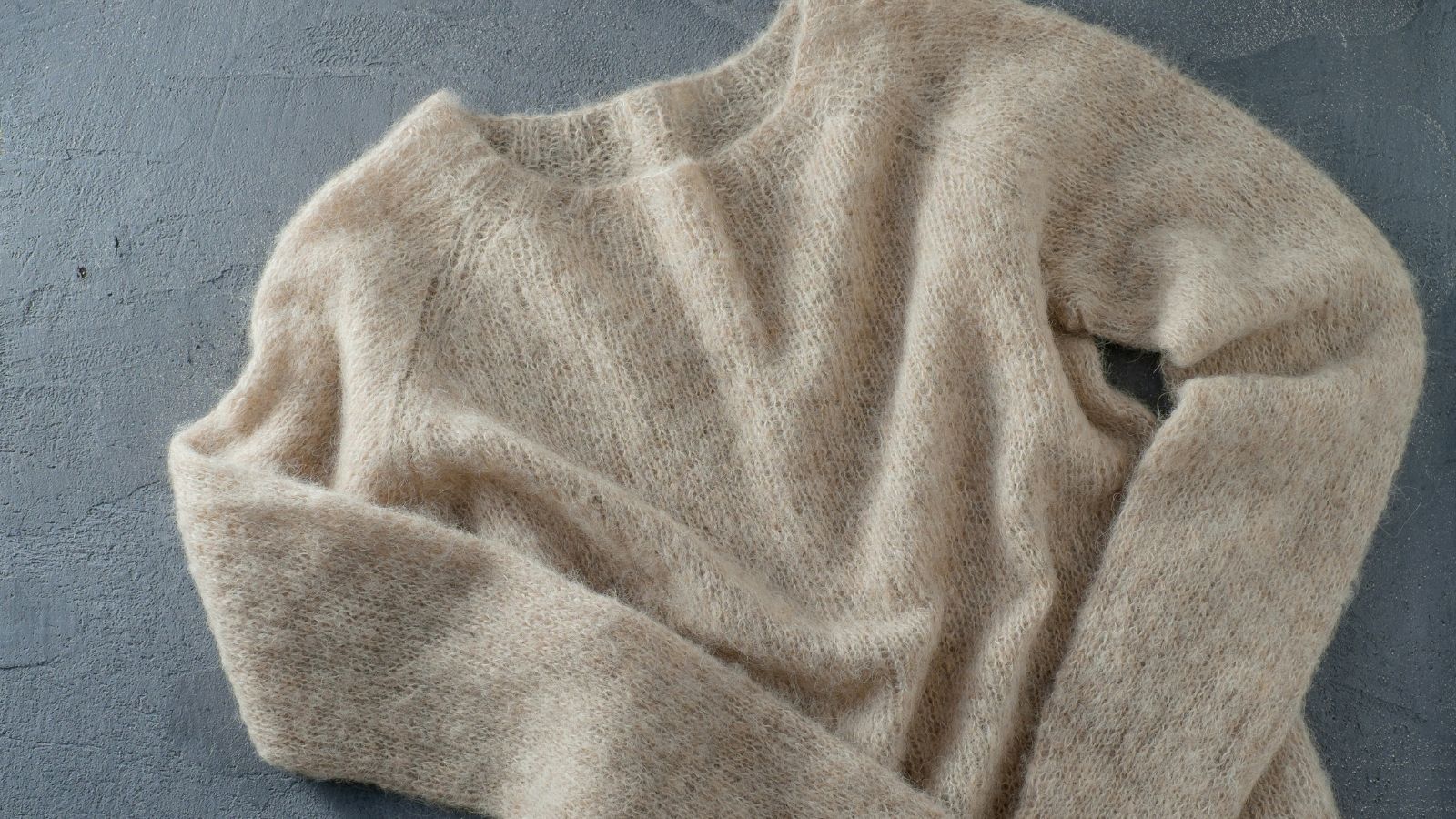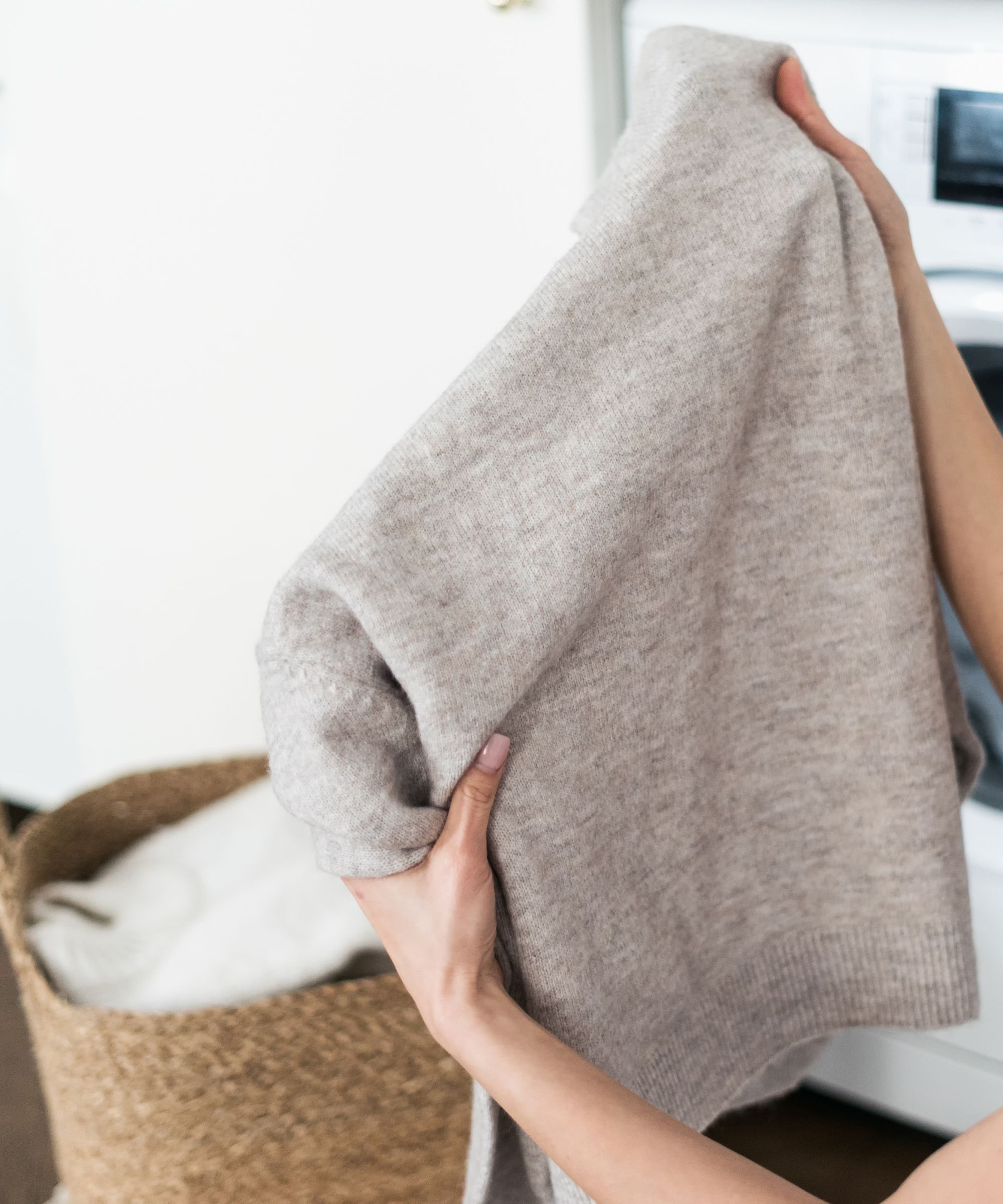My 3-step method for hand-washing wool – and why getting it right is so important
Hand-washing wool can seem daunting – but I have the process down to a fine art


There is nothing like snuggling up in a wool sweater on a cold winter day, but washing it afterward can be a nightmare – especially when you can’t simply throw it in your washer-dryer.
Don’t let the idea of learning how to handwash clothes put you off indulging in this luxury fiber, however.
Whether you’re wearing merino or cashmere, washing wool is simple with this three-step method I have honed over recent months.
Hand washing wool
When I first started hand washing my wool garments, there was a lot of trial and error. From not being able to squeeze all the soap out to struggling to get it dry in less than a day – I have made all the laundry mistakes thinkable. The important bit is I never shrunk any of my pieces.
This is how I managed to iron out the kinks and ace my routine.

1. Always use specialized wool conditioner
Laundry detergent is a fickle friend. It is great for cleaning and freshening up clothes – and you shouldn’t wash clothes without detergent, but it can leave a damaging residue on your clothing if not washed out fully. When hand washing clothes, this can be tricky, so I have found that it is best to invest in a wool wash, such as Woolite Delicates Detergent from Amazon so that any residue doesn't risk damaging the wool fibers as much as a regular detergent might.
What’s more, wool wash leaves my wool far softer than a traditional detergent and can even help to make a wool sweater less itchy, making it a win-win.
2. Soak, don’t scrub
One of my early laundry mistakes was scrubbing my wool sweaters, rubbing the fabric either with my hand, or scrubbing the fabric together to help work the conditioner into the fibers. This not only made my back ache as I worked over the side of my bath but also made the wool pill – especially in the case of washing cashmere blend sweaters.
Instead, I found that soaking the garment in a mix of warm (not hot) water and the directed amount of detergent was enough to freshen up the garment without damaging it. I simply agitated it occasionally over 10 to 15 minutes so that the detergent didn't settle and all the fibers were covered.
After soaking, I rinsed the fabric out under running lukewarm water until I couldn't feel the oily remnants of detergent anymore. This is the most strenuous part of the process given how heavy wool can be when wet, but it is arguably one of the more important steps.
3. Dry flat with a dehumidifier
Drying a wool sweater was another thing I initially struggled with. The trick, I discovered, is to squeeze as much water from it as possible before laying it to dry and, unless you have an old-fashioned mangle, this is tough work. I found that pressing the garment folded up against the side of my bath was the best method, letting the water run off to the drain (just be sure to clean your bathtub first so you don't make your sweater dirty again).
Another thing I discovered was to avoid wringing out the garment like a cloth at all costs. I discovered the unfortunate way that this will stretch the fabric and possibly misshape it – let’s just say it’s a good job I first tried hand washing wool with one of my more affordable sweaters.
Once squeezed within an inch of its life, drying it flat is a must. I laid mine out on an empty clothes airer and popped a dehumidifier underneath. The dehumidifier helped to draw moisture out while blowing dry air over the sweater, helping it to dry more quickly and preventing musty odors.

The Midea 50-Pint EnergyStar Smart Dehumidifier has a dedicated phone app, allowing you to control the dehumidifier from anywhere.
How to remove stains from wool by hand

Surprisingly, given how clumsy I am, I have never had to pull a stain out of a wool garment. However, Aaron Christensen, resident cleaning expert and VP of Growth at Homeaglow, explains that it is simpler than you think when you act early:
‘When dealing with a spill, dab and blot the stain from the outside inwards to help pick up as much excess liquid and prevent the stain from spreading,’ he begins. ‘Then, mix a cleaning solution of half white vinegar and half wool detergent mixed with cool water. Dab and blot the cleaning solution onto the stain, working your way from the outside of the stain inwards once again.’
After treating the stain, simply wash the wool item again as above, leaving it to soak in cool water with wool wash, gently agitating the stain until it lifts away from the fibers before squeezing out excess water and laying it out to dry flat.
FAQs
Can you unshrink wool?
If you have accidentally shrunk a wool garment or throw, it can be tricky to return it to its natural size, but possible. The trick is to soak the wool in cold water and a wool conditioner for at least 10 minutes and then stretch the item out flat on a clothes rack. As the item dries, continue to stretch it out to avoid it shrinking back in on itself. When it nears being completely dry, you can attempt to put the item on again to reform it to your body.
Can I wash wool on a hand-wash washing machine setting?
You can usually put wool on the hand wash or delicate setting on your washing machine, using wool shampoo in the detergent drawer of your machine as normal. To protect the fibers, turn the garment inside out and place it in a washbag to prevent it from pilling or stretching. When washing wool using machines, be sure to avoid using your dryer to prevent shrinking.
Of course, before you wash anything made from wool, it is important to check the laundry symbols on the care label first. Some wool garments are machine washable, while others may be dry clean only. Always be sure to wash accordingly.
Sign up to the Homes & Gardens newsletter
Design expertise in your inbox – from inspiring decorating ideas and beautiful celebrity homes to practical gardening advice and shopping round-ups.

Chiana has been at Homes & Gardens for two years and is our resident 'queen' of non-toxic living. She spends most of her time producing content for the Solved section of the website, helping readers get the most out of their homes through clever decluttering, cleaning, and tidying tips. She was named one of Fixr's top home improvement journalists in 2024.
-
 Ina Garten's storage pantry is an insightful window into all of the best cookware used by the chef – and it's easy to recreate on your kitchen shelves from $48
Ina Garten's storage pantry is an insightful window into all of the best cookware used by the chef – and it's easy to recreate on your kitchen shelves from $48The beautiful dishware in The Barefoot Contessa's Hamptons pantry showcases the tools she uses most often to cook – this is exactly how you replicate it
By Sophie Edwards Published
-
 Extend the lifespan of your appliance with 5 simple but crucial washing machine maintenance tips
Extend the lifespan of your appliance with 5 simple but crucial washing machine maintenance tipsFrom cleaning the filters to keeping the door open, experts reveal the washer tips they swear by
By Andy van Terheyden Published